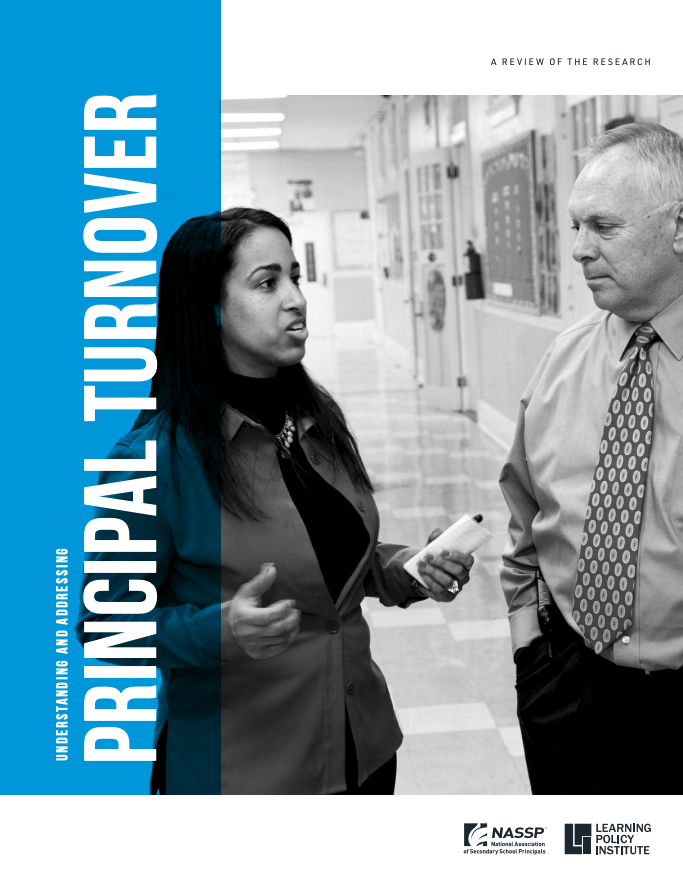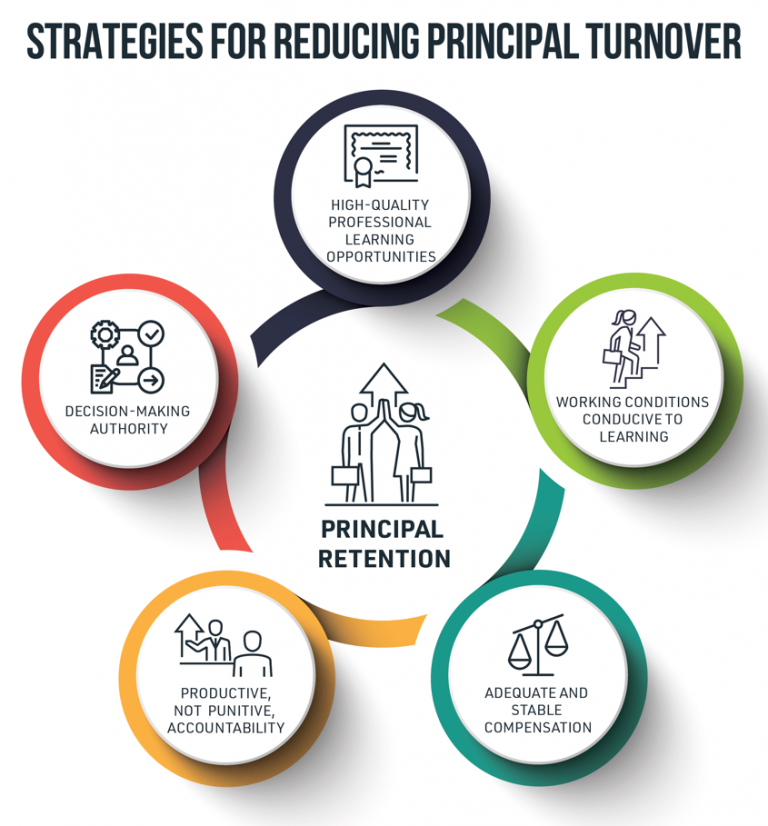Understanding and Addressing Principal Turnover
Principals are vital for ensuring student success—their actions help maintain a positive school climate, motivate school staff, and enhance teachers’ practice. Therefore, they play a major role in retaining effective teachers and ensuring their success in the classroom. Research notes that principal turnover can be disruptive to school progress, often resulting in higher turnover and ultimately lower gains in student achievement. Furthermore, the relationship between principal turnover and declines in student outcomes is stronger in high-poverty, low-achieving schools—the schools in which students most rely on education for their future success.
Turnover is a serious issue across the country. The national average of tenure of principals in their schools was four years as of 2016–17. This number masks considerable variation, with 35 percent of principals being at their school for less than two years and only 11 percent of principals being at their school for 10 years or more.
Why Do Principals Leave Their Jobs?
- Inadequate preparation and professional development: Several elements of professional learning are associated with principal retention, including high-quality preparation programs that carefully select and deeply prepare principals for challenging schools; access to in-service training, mentoring, and coaching opportunities that continue to support and develop principals; and collaboration between professional learning programs and school districts.
- Poor working conditions: A number of conditions can influence principals’ decisions about employment, such as access to support; the complexity of the job and amount of time needed to complete all necessary activities; relationships with colleagues, parents, and students; and disciplinary climate.
- Insufficient salaries: Salaries matter to principals in choosing new positions and in deciding whether to stay. Low salaries that do not adequately compensate principals and are not competitive with other jobs lead to higher rates of principal departure.
- Lack of decision-making authority: Principals are less likely to leave their positions when they believe they have greater control over their work environment and the ability to make decisions across a range of issues such as spending, teacher hiring and evaluation, and student discipline.
- High-stakes accountability policies: Counterproductive accountability polices can create disincentives for principals to remain in low-performing schools and can influence principals’ mobility decisions.
Read the first of three briefs as the National Association of Secondary School Principals (NASSP) and the Learning Policy Institute (LPI) outline which schools are most vulnerable to principal turnover and five key strategies to reduce it.


